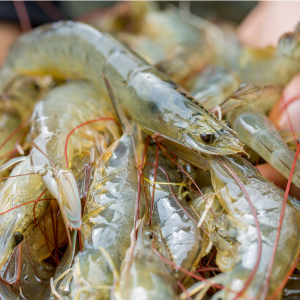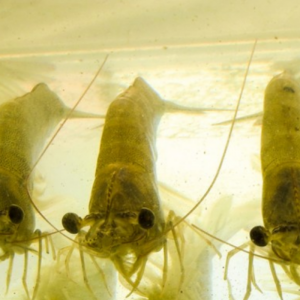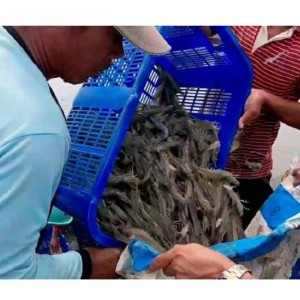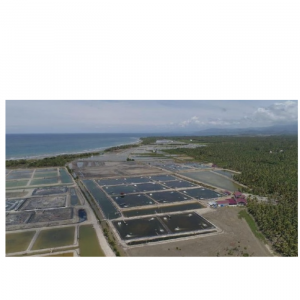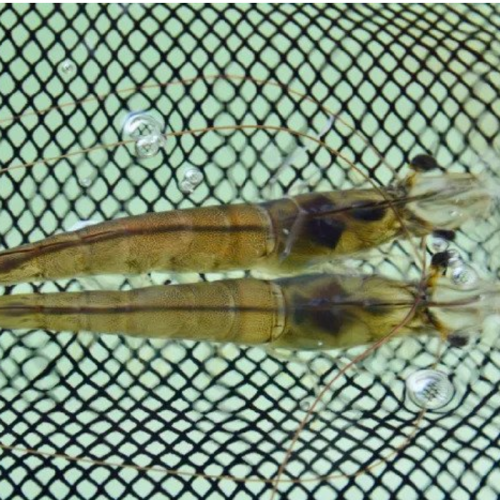
A Pioneering Perspective on Shrimp Genetics
| Tue, 10 Dec 2019 - 09:47
What inspired you to become involved in shrimp genetics?
I’m a medical doctor by training, but I’ve always preferred research over the clinical practice. I was trained in immunogenetics in Boston, where I worked on projects that included designing new methods for histocompatibility testing in bone marrow transplantation. When I got back to Colombia, I joined CorpoGen, a biotechnology company that was pioneering molecular biology research in Colombia. Getting into the world of shrimp was an accident – inspired by the appearance of white spot syndrome virus (WSSV) on the Pacific coast of Colombia in 1999. At the time CENIACUA (The Center for Aquaculture Research in Colombia) asked Corpogen to implement the PCR diagnostic test for the pathogen and to help in the prevention and control of this virus. I was involved from the beginning and found a new, exciting field with an excellent team of young researchers. I was hired as scientific director of CENIACUA in 2000 and since then I have been researching shrimp diseases and genetics.
What impact did becoming part of Benchmark have on your shrimp breeding programs?
Becoming part of a big company that, from the beginning, believed in the potential of our shrimp was exciting. As CENIACUA we were mainly focused on achieving the breeding goals but did not have the resources to commercialize the product. As part of Benchmark we are focused on producing the best animals for the market conditions, using state-of-the-art technology and facilities, and on selling them to our customers, all within the scope of sustainability.
Being part of the Benchmark also means we can count on the support and collaboration of other parts of the group, such as Morten Rye and his team at Akvaforsk Genetics; Oscar Hennig, Bruno Decock and the team in Asia, who are doing an incredible job of showing the potential of our animals under trials and commercial conditions; and working with INVE to create a synergy between genetics and nutrition that will help both companies. Learning from the experience of other breeding programs has enriched ours enormously too.
I’m also proud to be working with one of the best teams you can find – we’ve been working together for many years and have people with experience in all fields of shrimp breeding. We are a multi-disciplinary team with experience in plant breeding, veterinary and human medicine, biology and genetics, which is important when dealing with shrimp – they always like to have the last word and the last laugh.

What facilities do you have at your disposal?
Our main laboratory is located on the Atlantic coast of Colombia, near Cartagena, and is isolated from all the country's other aquaculture facilities. The climate is optimal for the growth of P. vannamei, and we have plenty of space to expand and produce the number of broodstock required by the market. We also have access to a laboratory on the Pacific coast of Colombia where we can work with a white spot-resistant strain without compromising the biosecurity of the breeding nucleus. Meanwhile, our challenge test facilities are located in Bogotá, more than a 1000 km from the breeding nucleus, allowing us to safely work with pathogens that are exotic to Colombia.
What areas are you currently focusing your research on?
We are currently introducing genomic selection for resistance to white spot syndrome virus (WSSV) and acute hepatopancreatic necrosis disease (AHPND) in our populations. Our priority is to produce clean, safe, specific pathogen-free (SPF) animals with high growth potential, but these must also be resistant to pathogens and environmental conditions.
What achievements are you most proud of in the shrimp field to date?
We’re very proud of having been able to keep the breeding program going during very hard times. In terms of academic achievements, we described the effect of hyperthermia in WSSV infection, we showed that apoptosis is part of the antiviral shrimp response, we identified the negative correlation between growth and WSSV resistance in P. vannamei and we have been able to produce robust shrimp with high growth potential.

Is the commercial shrimp sector increasingly interested in the power of genetics?
Yes, although selective shrimp breeding is relatively recent compared to in species such as salmon, the market for broodstock has been steadily growing. The most reliable data on the export of genetically improved P. vannamei broodstock comes from Hawaii, home to some of the main breeding programs in the US. It shows that from 2003 to 2015, the numbers of broodstock increased from nearly 100,000 in 2003 to 800,000 in 2015. In 2017 the export value was nearly US$30 million. There are also several breeding programs in Asia that are growing year by year
What are the key traits sought by shrimp producers – both in your region and globally?
The main trait targeted by shrimp producers in all regions is growth – we all need an animal that grows fast. In Latin America, the widespread use of large earthen ponds means that robustness is also a priority. In recent years, after several outbreaks of disease, Asia has also been looking for animals with high survival, making it a very interesting market for our SPF/SPR animals. The key lesson here is that one size does not fit all – not all broodstock are optimal for all conditions. In Punta Canoa, we are developing different lines – for example, early growth, low salinity, and WSSV-resistant – that can be distributed to different environments and culture conditions.
Can you explain the difference between SPR, SPF, SPT and APE shrimp?
Let’s start by classifying the four terms into two different groups: a) SPF and APE and b) SPR and SPT.
The first group is based on the sanitary status of the breeders. Specific pathogen-free (SPF) animals are those that have been tested and determined to be free of designated pathogens. Under the guidelines established by USMFSP, SPF shrimp stocks must come from a population that has tested negative for specific pathogens for at least 24 months and must be raised in highly biosecure facilities, following biosecure management measures, with a suitable surveillance program in place that uses both molecular and histopathological tools. The key term here is “specific” – SPF does not mean they are free from all pathogens, so the relevant pathogens should always be listed. On the other hand, APE (all pathogens exposed) is a term used to describe animals that have been raised in ponds or tanks where they have been exposed to one or more pathogens – either via challenge tests or under culture conditions. The term is misleading because the animals will never be exposed to all pathogens, but is the term used at the moment. Those animals can be carriers of the pathogens and are a risk for transboundary movements.
The second group of terms, specific pathogen resistant (SPR) and specific pathogen tolerant (SPT), refers to the way the shrimp deals with the pathogens. Resistance is defined as the ability to limit parasite burden, in other words, to fight the enemy. Tolerance, on the other hand, is the ability to limit the damage caused by a given parasite burden – in other words, to live with the enemy. They are two different types of defense against pathogens present in plants, invertebrates, and vertebrates, and both mechanisms can even be negatively correlated. In shrimp literature, there is a misconception that resistance is a qualitative trait and animals are either resistant or susceptible, while tolerance is a quantitative trait with different degrees of tolerance that can be affected by the environment. In reality, both traits are qualitative, and both can be affected by the environment. It is very difficult therefore to say if a given line is resistant or tolerant and the market is using the term SPR/SPT. As for SPFs, if a line is marketed as SPR or SPT it should list the pathogen(s), they are resistant or tolerant against.
What are the main challenges the shrimp sector needs to overcome and which of these would you most like to have a role in solving?
The main challenge for us is to produce a fast-growing shrimp that is not only resistant to pathogens but is also resilient under commercial culture conditions. Growth in shrimp has a very good heritability and is very easy to select for. However, the negative correlation of these traits with resistance to some pathogens, such as WSSV, and with environmental conditions, such as low oxygen levels, makes our work more interesting and challenging. It’s a question of how to increase growth rates without increasing mortality levels.
Source: The Fish Site













